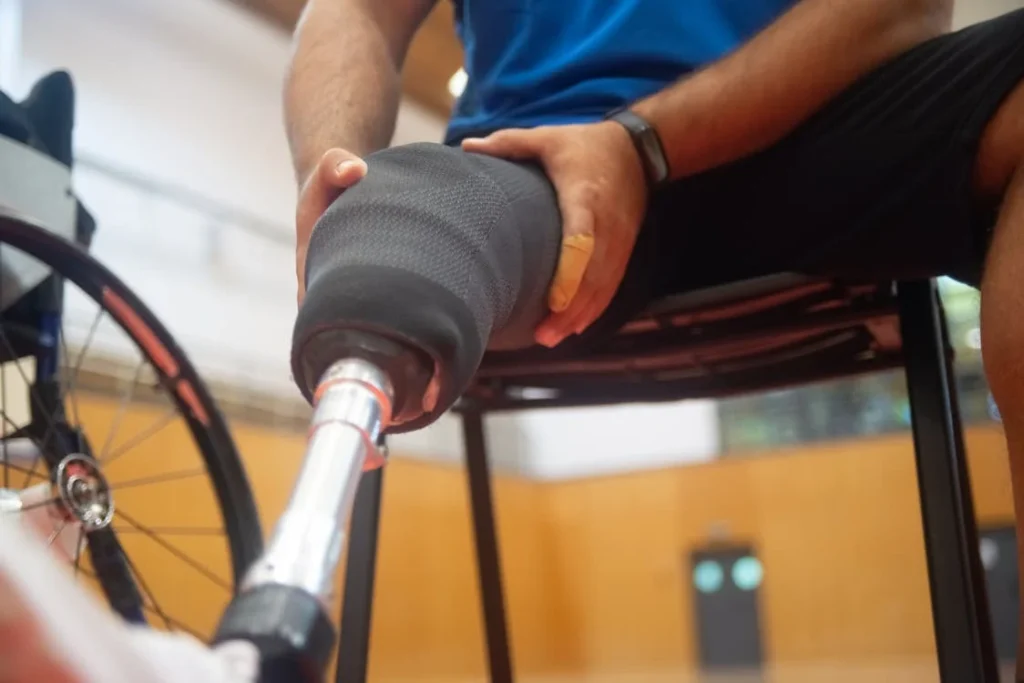Living with a prosthetic limb means your body has to work differently. Each step, each movement, depends on how well your prosthesis fits and feels. One of the most important parts of that fit comes from something you may not see at first: the liners and inserts inside the socket.
These soft layers act like a cushion between your skin and the hard parts of your prosthesis. They protect your limb, absorb shock, and help spread your weight more evenly. Without them, the pressure from walking or standing would go straight to your skin and bones, which can cause pain, swelling, or even injury.
Liners and inserts may seem small, but they do a big job. They keep you comfortable. They help you move better. And most importantly, they play a big role in how much weight your limb can handle safely. When chosen and used properly, they can completely change your experience with your prosthetic limb.
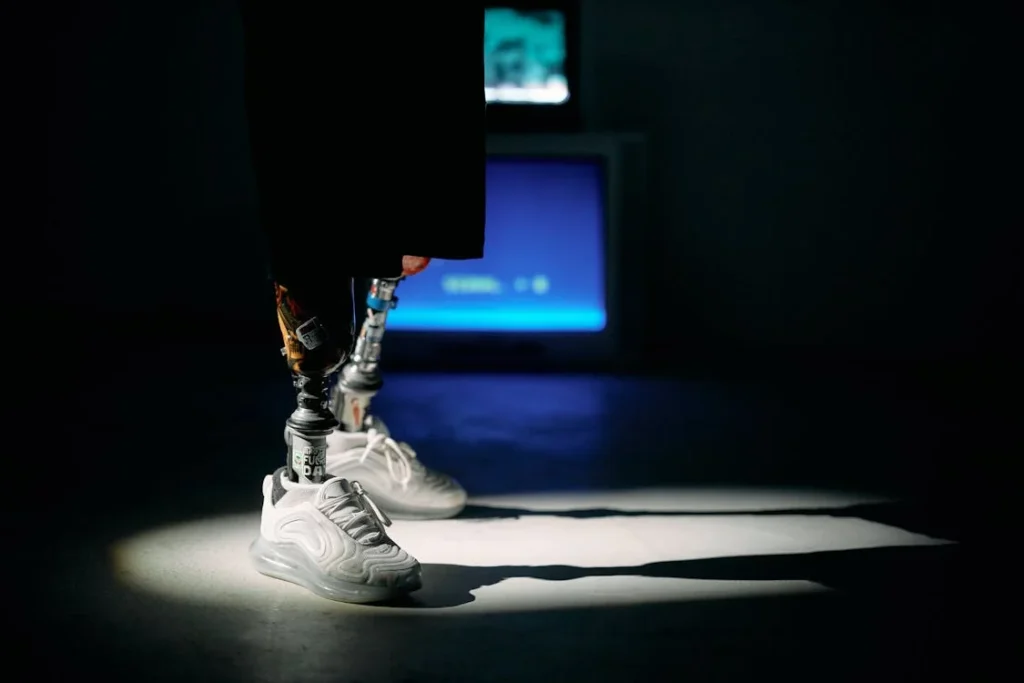
Understanding the Basics of Load and Pressure
What Weight-Bearing Means for Prosthetic Users
When we talk about weight-bearing, we mean how your body supports itself when you stand, walk, or move. For someone using a prosthetic limb, weight-bearing is a bit more complex.
Unlike a natural leg, which has skin, muscles, and bones working together to carry weight, a prosthetic limb relies on external structures like the socket, liners, inserts, and your residual limb to share the load.
Your residual limb becomes the main contact point between your body and the prosthesis. That small area is now responsible for holding much of your body’s weight.
The pressure placed on your skin, muscles, and bones can be intense, especially if the load isn’t spread out well. This is where liners and inserts become important. They help manage that pressure by softening the contact and guiding it across your limb evenly.
Without good weight distribution, certain spots on your limb may take on more pressure than they can handle. That’s when pain starts.
If left alone, this can lead to sores, swelling, or damage to deeper tissues. The goal is to avoid these issues by using components that help you bear weight safely and comfortably.
How Liners and Inserts Fit Into the Picture
Liners and inserts sit between your limb and the socket. The liner wraps around your residual limb like a soft sleeve.
The insert goes inside the socket and adds extra padding or support where needed. These two parts work together to make sure your limb feels secure, stable, and supported.
Liners help protect your skin. They reduce friction and keep the skin from rubbing against the harder socket walls. They also help absorb shock with each step.
This shock absorption is important, especially during high-impact activities like walking on uneven surfaces or going up stairs. Without it, the force travels up through your limb, which can make you sore or tired quickly.
Inserts, on the other hand, help fine-tune how your limb fits inside the socket. If certain areas need more support, an insert can be shaped to fill that space.
If another area needs more room, inserts can be trimmed or adjusted. This customization helps align the socket with your unique limb shape, which improves how your weight is carried.
Together, liners and inserts help create a connection between your body and the prosthesis that feels natural.
When they fit well, they make movement smoother and reduce pressure on any one part of your limb. This balance is what improves your weight-bearing ability and overall comfort.
The Impact of Poor Fit on Weight-Bearing
If your liner or insert doesn’t fit right, the problems start to show up quickly. You might feel like your limb is sliding inside the socket. That movement causes friction, which leads to skin irritation.
Or you might notice that some parts of your limb feel more pressure than others. This is a sign that the load isn’t being shared evenly, and over time, it can lead to deeper pain or injury.
Some people try to fix this by adding more socks or extra padding. While this may help temporarily, it doesn’t solve the real problem. In fact, it can make things worse by shifting the limb inside the socket and creating more uneven pressure.
The better solution is to look at how the liner and insert are working together. Are they shaped to your limb? Are they made from the right materials? Do they support your skin while also allowing it to breathe?
Even a small mismatch can throw off your balance and change the way you walk. This makes your muscles work harder and reduces your ability to bear weight safely.
In some cases, you may start to avoid using the prosthesis altogether, just to avoid pain. This slows down recovery and can weaken the rest of your body.
Liners and inserts may not look like much from the outside, but when they’re right, they can completely change your experience with a prosthesis.
They give your limb a softer, more stable foundation. And when your foundation is strong, your whole body moves better.
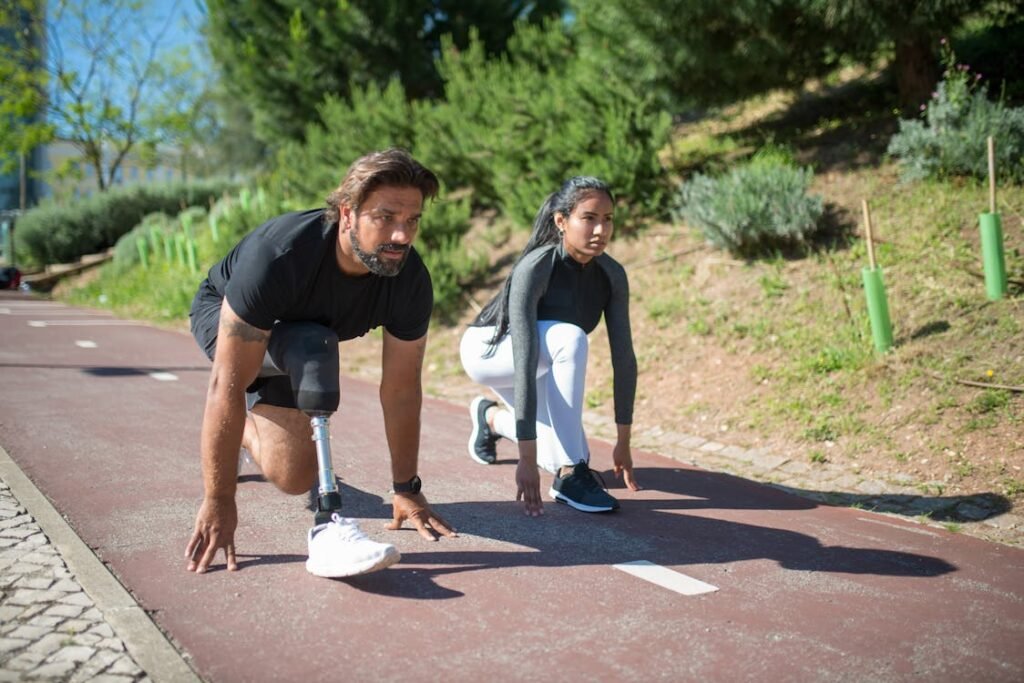
Choosing the Right Liners and Inserts for Better Support
Not All Liners Are the Same
Liners come in different shapes, sizes, and materials. Each type is designed to meet different needs. Some people need more cushioning. Others need something thinner that gives a closer fit.
There is no one-size-fits-all answer, because every limb is shaped differently and responds to pressure in its own way.
Some liners are made from silicone. These feel firm and are good for people with a stable limb shape who need solid support. Others are made from gel-like materials.
These feel softer and may be better for people with sensitive skin or areas that easily get sore. There are also liners made with softer fabric blends that stretch more easily, which help people with limbs that change shape throughout the day.
The right liner should match your skin’s sensitivity, your daily activity level, and your prosthesis design. If you move around a lot or walk on uneven surfaces, you may want something that absorbs more shock.
If your skin is delicate or easily irritated, then the liner must be breathable and gentle to avoid sweating and rubbing.
One common mistake people make is using a liner that’s too thick. While it might feel soft at first, it can make the limb fit too tightly inside the socket. This causes pressure to build in the wrong places.
A liner that’s too thin, on the other hand, may not provide enough cushion. The key is finding a balance—a liner that supports you without squeezing or shifting during the day.
Inserts and the Art of Fine-Tuning
Inserts play a quieter role than liners, but they’re just as important. They help adjust how your limb sits inside the socket. If the socket feels slightly off, a small insert can make all the difference.
For example, if one part of your limb is feeling too much pressure, a carefully placed insert can reduce that load and spread it elsewhere.
Some inserts are rigid and shaped to fill in specific spaces. Others are soft and mold to your limb when you wear them.
Some are even designed to be heat-moldable, which means they can be shaped more closely to your limb using gentle heat. This helps create a more exact fit, which makes load transfer smoother and more even.
If you’ve ever felt like your limb isn’t quite centered in your socket, or that you’re leaning slightly when you walk, the issue might be in how the load is being carried.
Inserts help guide your limb into a better position so that each step feels more balanced. They can be removed, added, or reshaped based on your comfort and any changes in your limb’s shape over time.
Your prosthetist will often make these small adjustments based on how you describe your comfort level and how you walk. It’s important to share even small discomforts or uneven pressure points.
A small change in an insert can lead to a big change in how you bear weight through your prosthesis.
The Role of Skin Health and Hygiene
Your skin is the first to feel the effects of poor pressure or bad alignment. If your liner or insert doesn’t let your skin breathe, you’ll start to notice irritation, especially in warm or humid weather.
Sweat can build up inside the socket, leading to chafing, rashes, or even infections. That’s why choosing liners and inserts that keep moisture under control is just as important as making sure they fit well.
Some liners come with built-in gel that cools the skin or materials that wick away moisture. These help your skin stay dry and prevent buildup of bacteria.
Washing your liner daily with mild soap and water keeps it clean and helps extend its life. Inserts, too, should be checked often for signs of wear, damage, or dirt buildup. A dirty or worn insert can harden or lose its shape, which leads to poor load transfer and new pressure points.
Taking care of your skin also means taking breaks when needed. If your skin looks red or feels sore after taking off the prosthesis, pay attention. These signs mean your liner or insert may need to be replaced or adjusted.
Good skin health supports better movement, better comfort, and safer weight-bearing overall.
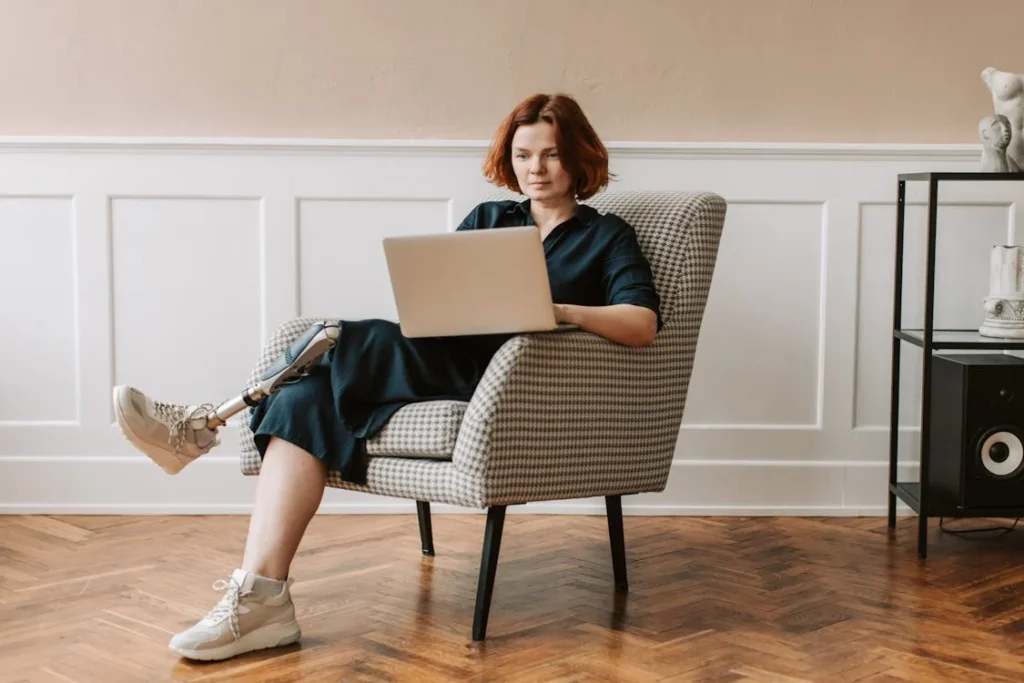
How Liners and Inserts Affect Your Movement
Improving Balance and Stability
Liners and inserts don’t just make your socket more comfortable—they help improve your balance. When your limb is well-supported and your weight is spread out evenly, you feel more steady on your feet.
That stability changes the way you move. You walk more confidently, you stand longer without shifting, and you don’t have to think so hard about every step.
Poor balance often comes from pressure points or loose-fitting parts that cause the limb to wobble inside the socket. If the liner doesn’t grip your skin properly, your limb may slide slightly with each step.
That movement can be small, but over time, it affects how well you control the prosthesis. Inserts help by correcting those little shifts.
They center the limb and hold it in a better position, so your steps are more aligned with your body’s natural movement.
Good alignment starts with a stable base. A liner that hugs your limb gently but firmly creates that base. The insert helps shape the inside of the socket to support that alignment.
When both are working well, the prosthesis feels like a true extension of your body—not just something you strap on. This feeling of connection makes walking, turning, climbing, or even standing on one foot feel more natural and less tiring.
Encouraging Healthier Walking Patterns
Many people who use a prosthesis develop small changes in their walking pattern without realizing it. This might be a slight limp, dragging one foot, or placing more weight on the other leg.
These small shifts happen when the prosthesis feels off—maybe due to pain, pressure, or imbalance. Over time, these habits lead to back pain, hip strain, or joint problems in the other leg.
Liners and inserts play a quiet but powerful role in helping correct these walking patterns. When the limb feels better inside the socket, there’s less need to adjust your step or lean to one side.
You start to walk more evenly. Your stride becomes smoother. Your weight moves from heel to toe in a more natural flow.
This not only reduces pain but also protects your joints and muscles from overwork. Your body doesn’t have to compensate anymore.
Instead of adjusting to discomfort, your movement becomes more efficient. You use less energy to do more, and that means you can stay active longer without feeling sore or tired.
A big part of this process is consistency. The better your liner and insert maintain their shape and grip, the more consistent your movement will be.
Sudden changes—like a liner stretching out or an insert breaking down—can throw off your balance and gait. That’s why it’s important to keep an eye on how your limb feels day to day. If something feels different, it might be time to look at your liner and insert more closely.
Supporting Longer Wear Time
One of the biggest signs that your prosthesis is working well is how long you can wear it without needing a break.
If you find yourself removing the limb every hour just to get relief, something isn’t right. Often, this issue can be traced back to the liners and inserts.
When your limb is supported in the right way, the pressure is spread out and soft tissues are protected. That means you can stand, walk, and go about your day without feeling like your limb is being squeezed or rubbed raw.
It also means you’re less likely to develop hot spots, blisters, or skin breakdown—all things that force you to take the prosthesis off more often.
Comfort leads to confidence. When you’re not thinking about pain or irritation, you focus more on what you want to do.
You can stay on your feet longer, get more done, and feel more like yourself. Liners and inserts, though simple, are at the heart of that experience.
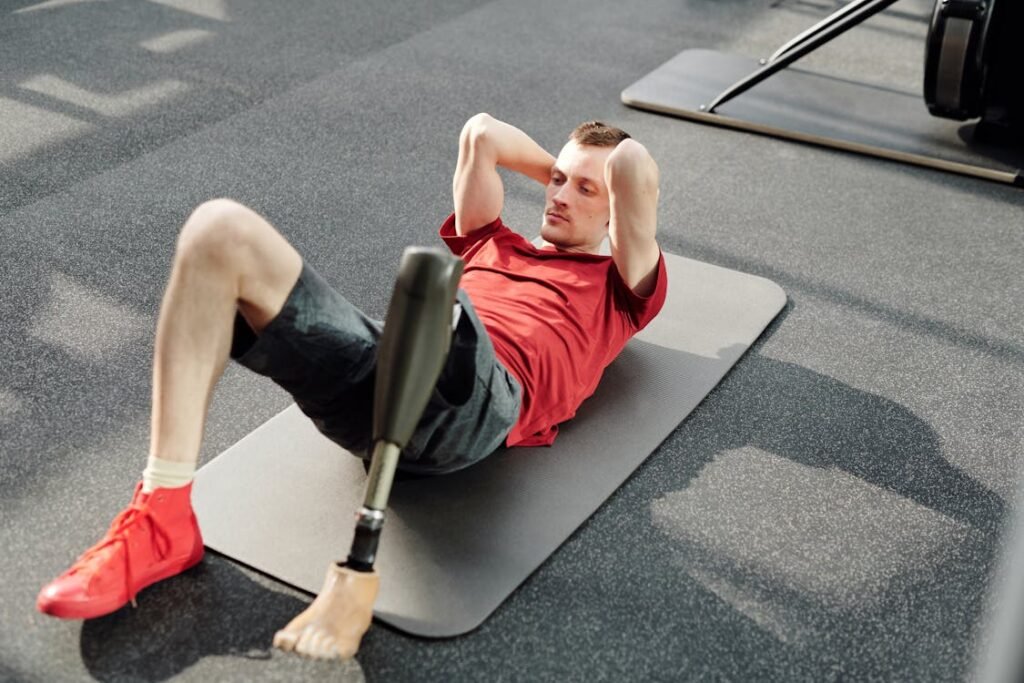
Adapting to Changes Over Time
How Your Limb Evolves
Your residual limb is not static. It changes with time, activity, diet, and even the weather. In the first months after amputation, your limb may shrink as swelling goes down and muscle mass changes.
Later, your shape may continue to shift based on how much you move, how your weight changes, or how your muscles respond to everyday use.
These changes are normal, but they affect how your prosthesis fits and how well liners and inserts work.
A liner that once felt snug may start to feel loose. Inserts that provided comfort might stop doing their job if your limb shape no longer matches their design.
These shifts may not be noticeable at first, but your body will start to send signals—aching, slipping, redness, or a general feeling that something is “off.” Ignoring these signals means you risk developing poor weight distribution again, and that could lead to pain or injury.
You don’t need to wait for something to go wrong before acting. Staying aware of how your limb feels every day is the best way to stay ahead of problems.
If your socket feels different, if your limb looks swollen or feels sore more often, or if your liner doesn’t stay in place the way it used to, it may be time for an update or adjustment.
When to Replace or Adjust Liners and Inserts
Even the best liners and inserts have a lifespan. Materials wear down. Liners lose their elasticity. Inserts may flatten or become uneven.
Over time, they stop doing their job as well, even if they still look fine on the outside. If you notice more slipping, less support, or more rubbing, these are signs the materials are breaking down.
A liner that used to hold your limb firmly might now stretch too much, causing movement inside the socket. This small shift increases friction and leads to pressure points.
Inserts that once provided a soft cushion might become compressed, leaving you without the shock absorption you need. These small changes may not seem like much, but they can lead to discomfort, poor posture, and even difficulty walking.
Replacing a liner or insert doesn’t mean your prosthesis is failing. It simply means you’re keeping up with your body’s needs. Just like shoes wear out after regular use, so do these parts.
Regular check-ins with your prosthetist can help catch signs of wear early. They can also help you explore new materials or shapes that may suit your limb better as it changes.
If you’re unsure whether it’s time for a replacement, trust your comfort level. You know your body best.
If your prosthesis doesn’t feel as secure or comfortable as it did before, something has changed—and most often, that change is related to how well your liner and insert are performing.
Working With Your Prosthetist for Long-Term Success
The key to long-term comfort and mobility isn’t just having the right components—it’s having the right team.
Your prosthetist plays a central role in making sure your liners and inserts continue to support you the way they should. This relationship works best when you’re open and honest about what you’re feeling, even if the problem seems small.
No one expects you to figure everything out on your own. Describing a dull ache or a sense that your limb feels “loose” might seem vague, but these details help your prosthetist understand what’s happening inside the socket.
They may take measurements, check how your liner is gripping the skin, and look at how pressure is distributed when you stand or walk.
From there, they can decide whether you need a new liner, a different insert, or a small adjustment that makes a big difference.
Sometimes a simple heat-molding process can reshape an insert to better match your limb. Other times, switching to a liner with better moisture control or more structure might solve the problem.
The options are wide, but you’ll only find the right one by speaking up and working closely with your care team.
This back-and-forth process is normal and expected. Your prosthesis should grow with you, not hold you back.
That growth comes through good communication, regular check-ins, and a willingness to make small changes that protect your comfort and mobility.
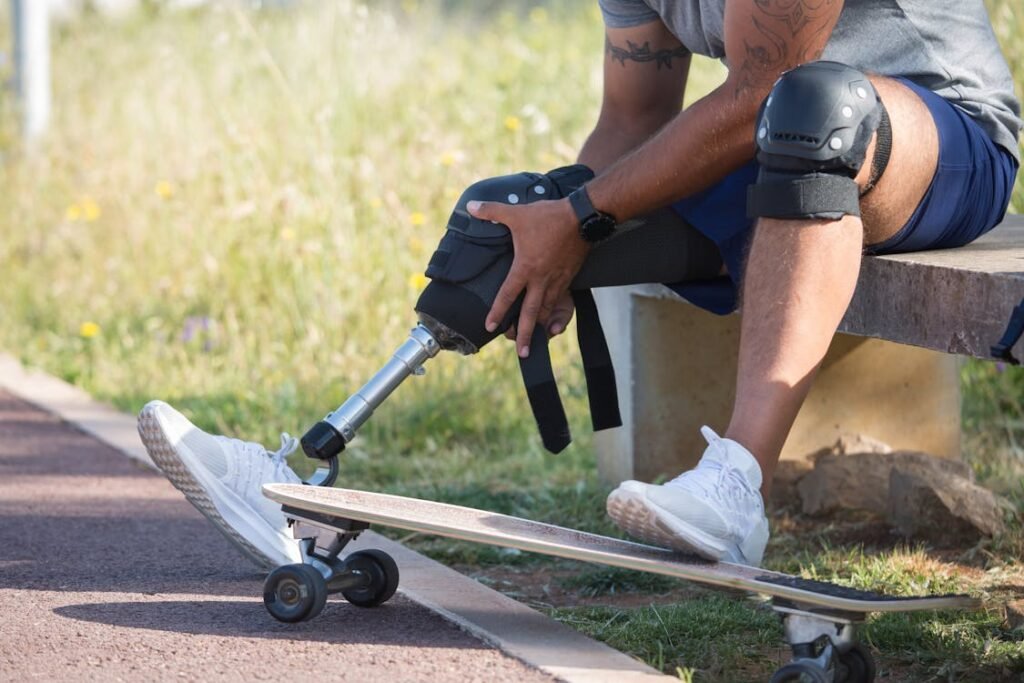
The Role of Liners and Inserts in Shock Absorption and Energy Return
Absorbing the Impact of Everyday Movement
One of the lesser-known but critically important roles of liners and inserts is their ability to absorb shock. Every time you take a step, your body sends force through your limb and into the ground.
In a natural leg, your joints, muscles, and tendons absorb this impact smoothly. But in a prosthetic limb, that job falls to the mechanical parts—and especially to the soft layers closest to your skin.
Liners act as the first line of defense. They cushion the blow of each step, protecting your skin and tissues from jarring forces. This is especially important on hard surfaces like pavement or tile.
Without good shock absorption, your residual limb would feel every bump, crack, or stair as a sharp, painful jolt. Over time, that kind of constant impact can wear down your skin, inflame deeper tissues, and leave you feeling exhausted after even short periods of activity.
Inserts work alongside liners to dampen this impact even further. If placed correctly, inserts can redirect and soften the energy that travels up your limb during movement.
This helps protect your limb, but it also protects other parts of your body—like your hips, lower back, and the joints in your sound limb. Poor shock absorption doesn’t just affect your limb; it throws off your entire posture and movement.
Helping You Move With Less Effort
Energy return is a term often used in sports, but it’s just as important for everyday prosthetic users. It refers to how much of the energy from each step is stored and reused to help you move forward.
While most of the energy return comes from the prosthetic foot or pylon, liners and inserts also play a subtle role.
When a liner fits well, it allows your limb to move in sync with the prosthesis. That smooth connection helps your stride feel more natural and efficient.
You don’t waste energy adjusting your balance or compensating for discomfort. Instead, your movements become more fluid. Inserts support this process by helping align your limb in a way that improves gait efficiency.
If your limb is tilted or slightly out of line in the socket, you lose energy with each step. When the limb is better centered and the load is distributed properly, your movements require less effort.
This has a direct effect on your endurance. A good combination of liner and insert helps you walk longer distances, climb stairs more easily, and stay on your feet with less fatigue. You’re not just moving more comfortably—you’re moving more efficiently.
Enhancing Daily Confidence Through Subtle Support
Shock absorption and energy return may seem technical, but their benefits are deeply personal. When your limb feels protected and supported, your confidence grows.
You’re more likely to take that extra walk, play with your children, or stand longer while cooking dinner. The difference lies in how your body feels with each step. Instead of bracing for discomfort, you trust your limb to support you.
This confidence also encourages natural posture. When you’re not guarding against pain, your shoulders relax, your spine straightens, and your weight shifts smoothly from side to side.
That natural flow reduces strain across your whole body. Liners and inserts make this possible not just by providing a cushion but by creating a responsive, adaptive fit that works with you—not against you.
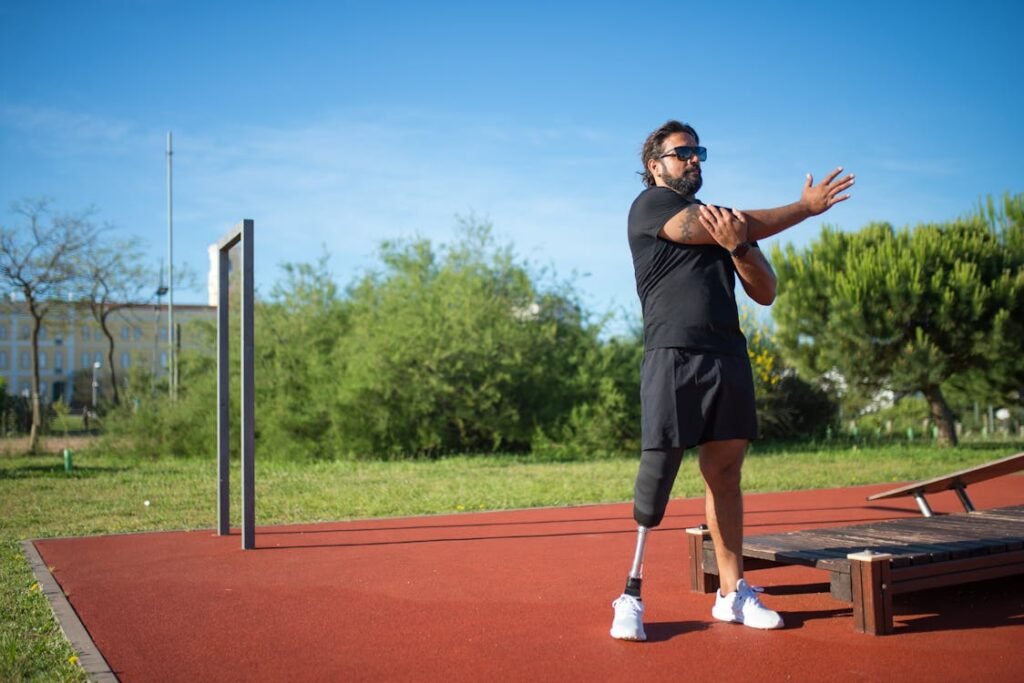
Psychological Comfort: How Liners and Inserts Support Mental Well-Being
Reducing Anxiety Around Prosthetic Use
Adjusting to life with a prosthesis involves more than physical healing. There’s a deep emotional journey that runs alongside every step you take.
Many users, especially in the early stages, deal with fear—fear of pain, fear of falling, and fear of discomfort. These fears are valid, especially if your limb has been sore or your prosthesis has felt unstable in the past.
Liners and inserts may seem like simple accessories, but they play a quiet role in easing those fears. When your limb feels secure, protected, and supported, your mind begins to relax.
You stop anticipating discomfort. You stop bracing yourself for every movement. That subtle shift reduces anxiety and builds a sense of trust between your body and your prosthesis.
This trust is powerful. It can change how you approach each day. Instead of wondering how long you can wear your prosthesis before it starts hurting, you begin to plan outings and activities with confidence.
You think less about your limb and more about your goals. That’s the kind of mental freedom every user deserves—and liners and inserts, when chosen and fitted well, are a key part of creating it.
Improving Body Image and Self-Acceptance
Wearing a prosthesis can bring emotional challenges tied to body image and identity. Some users struggle with how they feel about their new body, especially if pain or poor fit makes the prosthesis feel like an outsider—something separate, foreign, or even frustrating. This can lead to feelings of disconnect or self-consciousness.
But when your prosthesis fits well, feels comfortable, and functions smoothly, it starts to feel like a part of you. That connection is easier to build when liners and inserts do their job.
They help your limb settle naturally into the socket, reduce visible signs of strain like redness or swelling, and give you a sense of physical wholeness. This ease and comfort encourage you to accept your new body with more kindness and understanding.
Feeling in control of your limb and how it performs can also make public interactions more comfortable. You’re not constantly adjusting, wincing, or shifting your weight.
That absence of distraction helps you engage with others more freely and focus on what you’re doing—not on what might go wrong.
Creating a Sense of Safety and Routine
One of the most overlooked parts of using a prosthesis is how much peace of mind comes from routine. Knowing that your limb will feel good when you put on your prosthesis each morning is powerful.
That kind of consistency is deeply reassuring, and liners and inserts play a huge role in making it happen.
When your limb slides into a liner that hugs it just right, when the insert holds you stable without needing constant readjustment, you begin your day with confidence.
This feeling of predictability reduces mental fatigue and makes daily life more manageable. It becomes easier to focus on your job, your hobbies, your family—because the prosthesis becomes a tool, not a worry.
Emotional well-being isn’t just about big breakthroughs or therapy sessions. Sometimes, it’s about the quiet, simple things that help you feel steady and supported.
Liners and inserts, though often hidden from view, are part of that emotional support system. They help build routines that restore peace, confidence, and a sense of normalcy.
Conclusion
Liners and inserts may seem like small parts of a prosthetic system, but their impact is anything but small. They cushion your limb, protect your skin, balance your weight, and improve how you move. Just as importantly, they help you feel safe, confident, and in control—both physically and emotionally.
A well-fitting liner and thoughtfully placed insert can reduce pain, prevent injury, and make your prosthesis feel like a natural extension of your body. They support not just your steps, but your daily routines and your peace of mind. As your body changes, so should your liners and inserts. Regular care, honest feedback, and small adjustments go a long way in helping you move better, longer, and with more ease.
Comfort isn’t a luxury—it’s a foundation. And with the right support, every step forward becomes a little lighter, a little smoother, and a lot more yours.



